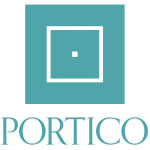EARLY FORM, TECHNIQUE, SUBJECT AND CONTEMPORARY CHANGED DIMENSIONS OF KALAMKARI FOLK PAINTING
कलमकारी लोक चित्रकला का प्रारंभिक स्वरूप, तकनीकी, विषय एवं समकालीन परिवर्तित आयाम
DOI:
https://doi.org/10.29121/shodhshreejan.v2.i1.2025.17Keywords:
Kalamkari, Folk Painting, Natural Colors, Technique, Community, Andhra PradeshAbstract [English]
Kalamkari folk painting is a traditional art style of India, developed by rural and tribal communities over generations. This painting expresses social, cultural and religious sentiments, and uses natural colors, simple lines and symbolic depictions. Kalamkari is popular in fashion and interior design today. Digital printing and the use of chemical colors have affected its traditional purity, but many artisans are engaged in keeping the natural and handmade techniques alive.
Abstract [Hindi]
कलमकारी लोक चित्रकला भारत की पारंपरिक कला शैली है, जो ग्रामीण और जनजातीय समुदायों द्वारा पीढ़ियों से विकसित की गई है। यह चित्रकला सामाजिक, सांस्कृतिक और धार्मिक भावनाओं को व्यक्त करती है, और इसमें प्राकृतिक रंगों, साधारण रेखाओं और प्रतीकात्मक चित्रण का उपयोग होता है।कलमकारी आज फैशन और इंटीरियर डिज़ाइन में प्रचलित है। डिजिटल प्रिंटिंग और रासायनिक रंगों के उपयोग ने इसकी पारंपरिक शुद्धता को प्रभावित किया है, लेकिन कई कारीगर प्राकृतिक और हस्तनिर्मित तकनीकों को जीवित रखने में जुटे हैं।
References
Bhanavat, M. (1974). Folk Art: Values and Context. Bharatiya Lok Kala Mandal.
Drishti IAS. (n.d.). Indian Art – Part 7.
Krothapally, S. (2020). Kalamkari: The Strokes of Elegance [Kindle Edition].
Kumar, A. (2020). Indian Folk and Tribal Art. B.R. Publisher.
Ministry of Culture. (n.d.). Kalamakaarai. Indian Culture.
Ramani, S. (2021). Kalamkari & Traditional Design Heritage of India. Wisdom Tree.
Published
Issue
Section
License
Copyright (c) 2025 Siddharth Tripathi

This work is licensed under a Creative Commons Attribution 4.0 International License.
With the licence CC-BY, authors retain the copyright, allowing anyone to download, reuse, re-print, modify, distribute, and/or copy their contribution. The work must be properly attributed to its author.
It is not necessary to ask for further permission from the author or journal board.
This journal provides immediate open access to its content on the principle that making research freely available to the public supports a greater global exchange of knowledge.



















